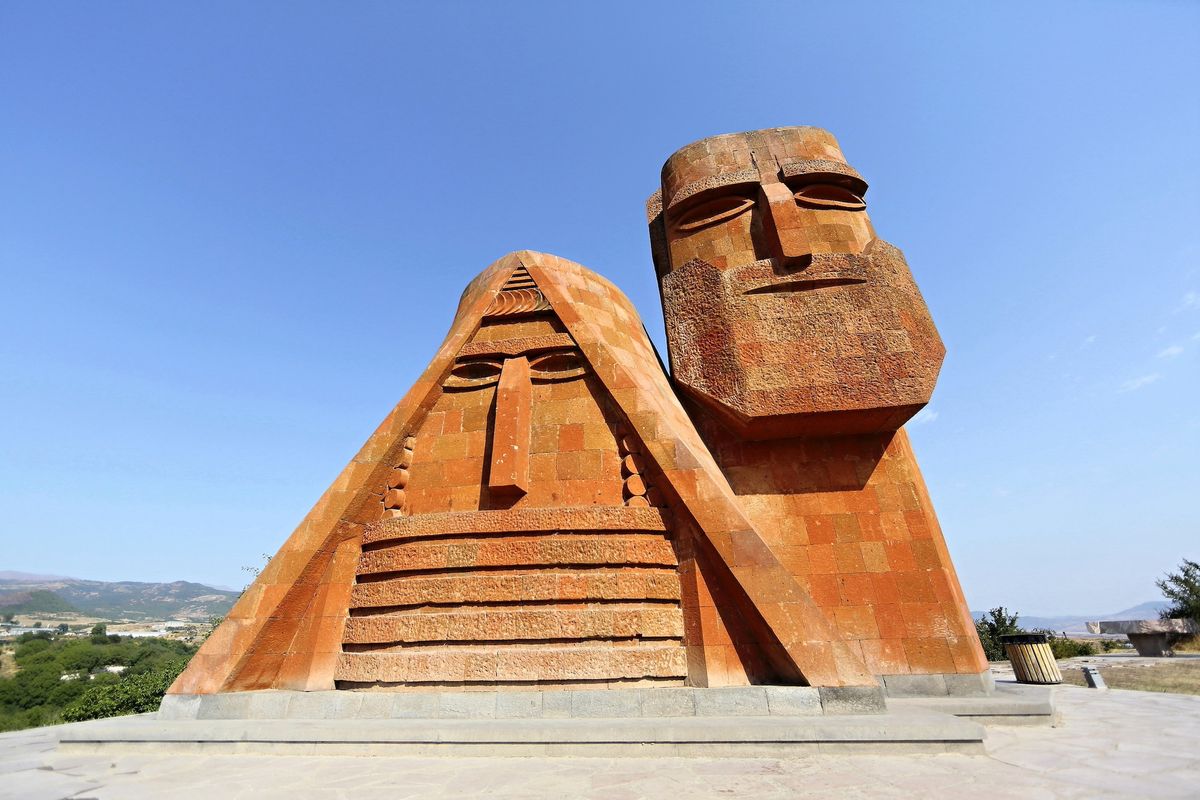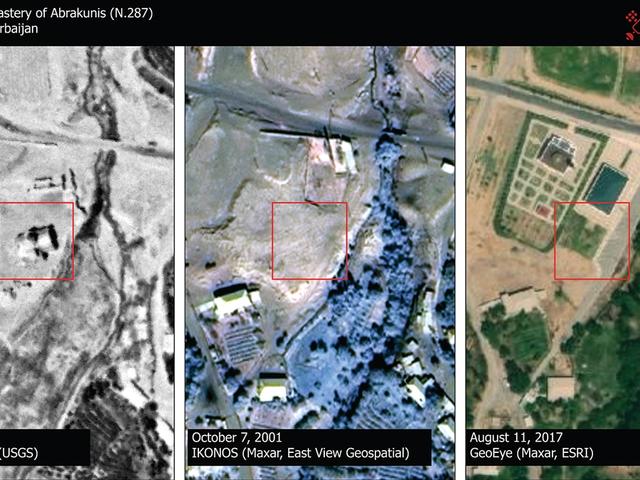Azerbaijan seized control of Nagorno-Karabakh in a lightning offensive on 21 September that sent tens of thousands of Armenian residents of the mountainous enclave that they call Artsakh fleeing to safety, precipitating a humanitarian crisis and dire predictions about the region’s cultural heritage.
The takeover by Azerbaijan and dissolution of the Republic of Artsakh, announced by its Armenian leadership on 28 September, is the latest chapter in a war that began in the 1980s and cultural disputes that stretch back centuries. It was preceded by an Azerbaijani blockade imposed in December 2022 that cut off most food, medicine and fuel. Luis Moreno Ocampo, the first chief prosecutor of the International Criminal Court has called it a genocide.
The spectre of the 1915 Turkish genocide of Armenians, which removed them from Anatolia, hangs over the region. Armenians are Christian, Azerbaijanis, who are associated with Turkey, are Muslim. Russian peacekeepers stood aside as Azerbaijani forces swept through last month.
A United Nation mission reported on 2 October that as few as 50 ethnic Armenians out of a previous population of around 120,000 remain in the long-disputed region between Armenia and Azerbaijan. According to the mission “there was no visible damage to public infrastructure”, including “cultural and religious structures”.
On 25 September Shusha, a historic city in the region that Azerbaijan seized in 2020 along with 1,500 art objects, was declared “Capital of Culture of the Islamic World 2024” by a gathering of culture ministers held in Qatar. The announcement coincided with Armenians fleeing Nagorno-Karabakh en masse.
In a statement, Azerbaijan’s culture ministry described Shusha as “one of the important centres of the historical, cultural, social and political life of Azerbaijan, as well as one of the symbols of Islamic civilisation”.
Both Azerbaijanis and Armenians lay claim to the cultural heritage of Shusha, which was founded as a city in the 18th century. Monuments in the city include both churches and mosques. Declassified Cold War satellite imagery published in The Art Newspaper for the first time has shown that the government of Azerbaijan destroyed every Armenian Christian site, including all churches, in Nakhichevan, an Azerbaijani enclave, between 1997-2006. Azerbaijan declared 2022 the year of Shusha and this year it is Cultural Capital of the Turkic World.

Shusha's St John the Baptist Church, or Kanach Zham, before its partial destruction during the Nagorno-Karabakh war of 2020 Photo by vahemart, via Wikimedia Commons
On Monday, as reported by Hyperallergic, a petition was gaining ground to save We Are Our Mountains, a monument known colloquially as “Tatik-Papik” or “Grandmother-Grandfather”. It was built in the 1960s by artist Sargis Baghdasaryan and architect Yuri Hakobyan, who are both Armenian. It is feared that the monument, which is located outside the capital of Artsakh, Stepanakert (which is called Khankendi by Azerbaijanis), might be removed as part of an effort to erase Armenian identity. According to the petition, an organisation called All for Armenia “is trying to find a way, if any, to save this statue by enforcing a no-touch rule and ensuring its preservation”.
The office of Azerbaijani president Ilham Aliyev released a plan on 2 October for the “reintegration” of Nagorno-Karabakh’s Armenian residents. The plan states that “freedom of religious belief, protection of cultural and religious monuments is ensured”. Aliyev is serving his fourth term after succeeding his late father, Heydar Aliyev, a former KGB official, as president in 2003. Freedom of speech and human rights have continued to deteriorate under his regime.
Shirin Melikova, director of the Azerbaijan National Carpet Museum in Baku and also the chair of the Azerbaijani branch of the International Council of Museums (Icom), reposted a call to tear down Tatik-Papik as a symbol of “the fictional ‘Nagorno-Karabakh Republic’”.
Aliyev and his wife, Mehriban Aliyeva—who is both the first lady and vice president of Azerbaijan—attended the inauguration of the Shusha branch of the National Carpet Museum last May. Azerbaijan claims that carpets that had been shown in the Shusha carpet museum belonging to Armenian collector Vardan Astsatryan, until the 2020 takeover, are in fact Azerbaijani. Astsatryan was forced to leave some of them behind and they are part of the new Azerbaijani-run museum. He is displaying carpets from his collection that he was able to evacuate in Yerevan, the capital of Armenia.



